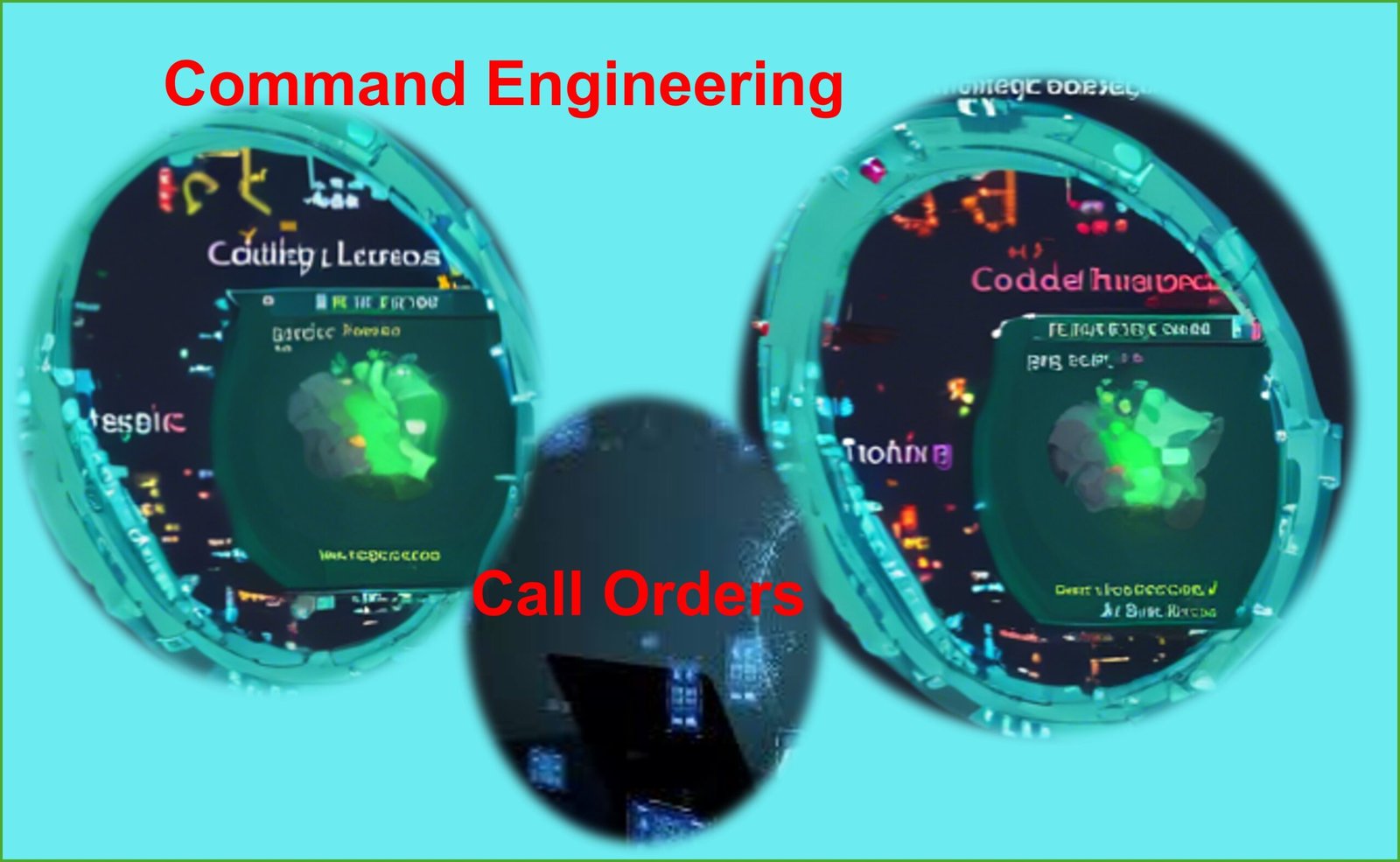

Introduction
In the realm of programming and computing, many terms appear similar but hold fundamentally different meanings. Among these are “Command Engineering” and “Call Orders.” Although both relate to the issuance and execution of commands, understanding their differences is crucial for any developer or software engineer. This article aims to elucidate the core distinctions between Command Engineering and Call Orders, providing a detailed exploration of their key aspects and practical applications.
Key Topics
1. Definition of Command Engineering and Call Orders
2. Primary Uses
3. Technical Differences
4. Practical Applications
5. Examples and Explanations
Mastering the distinctions between Command Engineering and Call Orders is crucial for software developers aiming to create efficient, scalable, and maintainable applications in today’s technology-driven world
1- Definitions
Command Engineering:
Command Engineering pertains to the design and development of commands executed by computing systems or software. This process involves creating commands that direct the system to perform specific tasks and developing user interfaces that allow users to issue these commands seamlessly. Command Engineering is vital in the creation of complex systems where user inputs control various operations.
Call Orders:
Call Orders, on the other hand, refer to commands used to invoke specific functions or procedures within software. These are typically part of a protocol or Application Programming Interface (API) used to call services or procedures in a specific runtime environment. Call Orders are essential in modular programming, where various components or services need to interact efficiently.




2- Primary Uses:
Understanding the nuances between Command Engineering and Call Orders can significantly enhance a developer’s ability to design robust systems that effectively integrate user commands with automated processes
Command Engineering:
– Utilized in the design and development of operating systems, software applications, and games.
– Facilitates user control over software through text-based or graphical command interfaces.
Call Orders:
– Primarily used in developing applications that rely on calling specific functions within software or external systems, such as web services or internal application functions.
– Helps in integrating various services and functionalities within an application.
3- Technical Differences
Command Engineering:
– Structure: Involves designing a command infrastructure that can be utilized and managed by users. This includes the development of both text-based and graphical user interfaces.
– Complexity: Often requires a more sophisticated setup as it involves creating a comprehensive system of commands that can interact with various software components.
– Examples: Shell commands in operating systems, command-line interfaces (CLI), and user input commands in gaming.
Call Orders:
– Structure: Focuses on invoking specific functions within software or an operating system. This requires a precise understanding of the protocols and APIs in use.
– Complexity: Generally simpler in terms of structure but requires in-depth knowledge of the specific APIs or functions being called.
– Examples: API calls in web applications, function calls within a program, service requests to external systems.
4- Practical Applications:
Command Engineering empowers developers with intricate control over system functions, while Call Orders streamline the execution of predefined tasks, highlighting their complementary roles in sophisticated software development.
Command Engineering:
– Operating Systems: Developing systems like Linux and Windows where commands control various system operations.
– Software Development: Creating applications where complex command sequences are necessary, such as automation scripts.
– Gaming: Developing game engines and user interfaces that rely on command inputs to trigger in-game events.
Call Orders:
– Web Development: Implementing functionality in web applications that require interaction with web services, such as fetching data from an external API.
– Software Integration: Utilizing APIs to integrate third-party services or components within an application.
– Data Processing: Automating tasks and workflows by invoking pre-defined functions and procedures.
5- Examples and Explanations
Example of Command Engineering:
In a Linux operating system, a user can use the command `ls` to list the contents of the current directory. This command is part of the system’s command engineering framework, enabling users to interact with the file system.
Example of Call Orders:
In web development, a developer might use a call order to fetch data from an external API, such as `fetch(‘https://api.example.com/data’)`, to retrieve and display information from a remote server.
Comparative Analysis
| Feature | Command Engineering | Call Orders |
|———————-|—————————–|—————————-|
| Control | High | Moderate |
| Efficiency | High | Medium |
| Dependency | Low | High |
| Customization | High | Low |
| Ease of Use | Medium | High |
| Reusability | Low | High |
| Maintenance | Complex | Simple |
| Compatibility | Low | High |
Conclusion
Understanding the differences between Command Engineering and Call Orders is vital for developers and software engineers. Command Engineering focuses on designing and developing commands for system control, while Call Orders are used to invoke specific functions within applications or external systems. By comprehending these distinctions, developers can select the appropriate tools and techniques for their projects, ensuring efficient and effective software development.
With the growing importance of artificial intelligence and complex software systems, the skills in Command Engineering and Call Orders are becoming increasingly essential. Developers adept in these areas will be well-equipped to tackle the challenges of modern software development and integration.
Additional Information
For further insights into Command Engineering and Call Orders, consider exploring these resources:
– [IBM Documentation on Command Definitions](https://www.ibm.com/docs/SSLTBW_2.1.0/com.ibm.zos.v2r1.idac100/amsdef.htm)
– [Wikipedia on API](https://en.wikipedia.org/wiki/API)
– [Wikipedia on Software Design Pattern](https://en.wikipedia.org/wiki/Software_design_pattern)
By leveraging a blend of both approaches and ensuring thorough documentation and testing, developers can create robust, maintainable, and scalable software solutions.